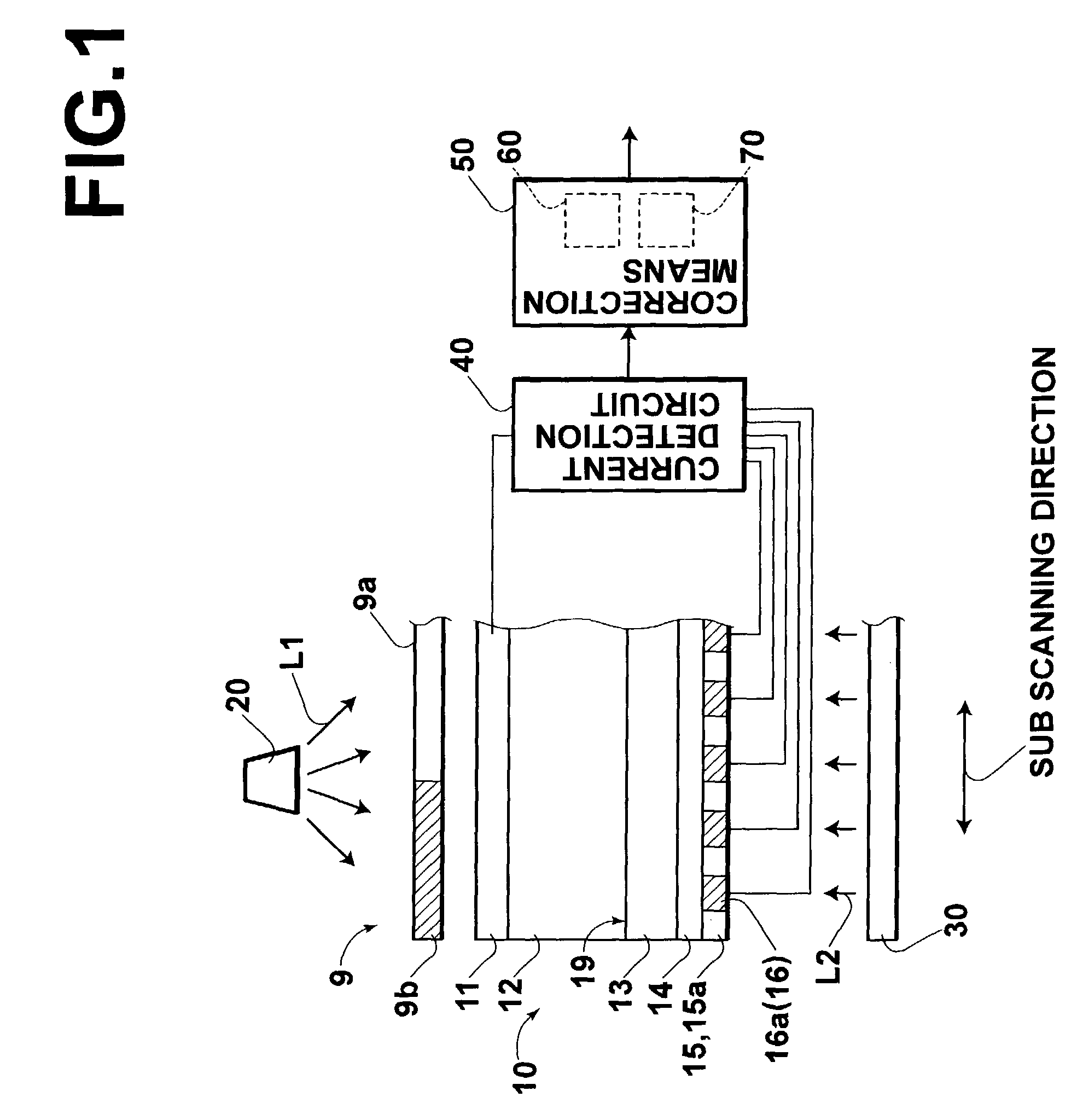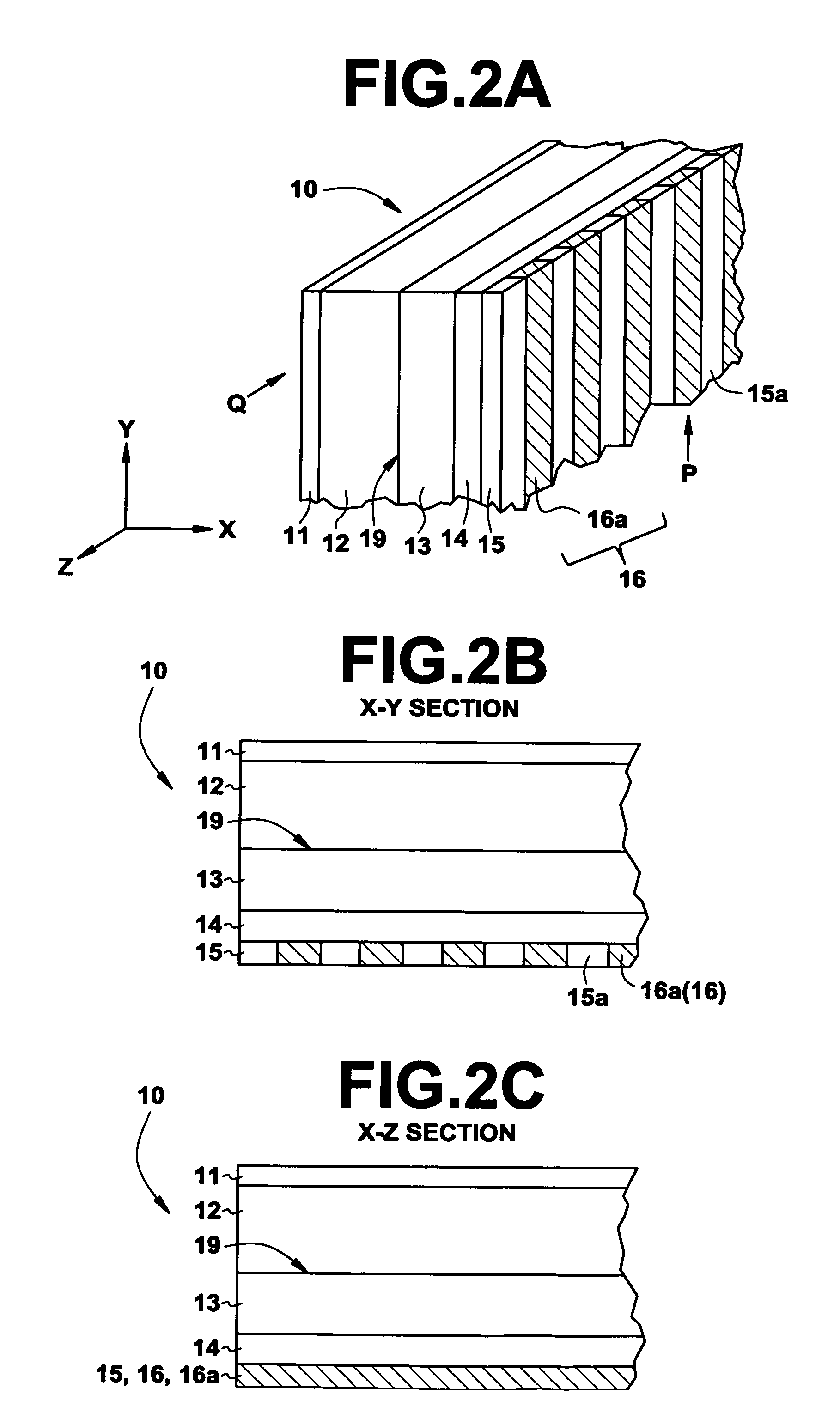Image reading method and apparatus
a reading method and image technology, applied in the field of image reading methods and apparatuses, can solve the problems of reducing the reading efficiency of residual charges, and reducing the charge conversion efficiency, so as to reduce the degradation of image quality, accurate correction, and calculation more accurately
- Summary
- Abstract
- Description
- Claims
- Application Information
AI Technical Summary
Benefits of technology
Problems solved by technology
Method used
Image
Examples
Embodiment Construction
[0036]A description will be made below for an embodiment of the present invention with reference to the drawings. FIG. 1 is a schematic view showing a radiation image recording and reading apparatus to which an embodiment of an image reading apparatus carrying out an image reading method according to the present invention is applied. FIGS. 2A to 2C are schematic views showing a radiation solid-state detector used in the embodiment. Specifically, FIG. 2A is a perspective view thereof. FIG. 2B is an X-Z sectional view of a portion indicated by an arrow Q. FIG. 2C is an X-Y sectional view of a portion indicated by an arrow P.
[0037]First, a description will be made for a radiation solid-state detector 10 for use in the present radiation image recording and reading apparatus. The radiation solid-state detector 10 includes a first electrode layer 11, a recording photoconductive layer 12, a charge transport layer 13, a reading photoconductive layer 14, and a second electrode layer 15, whic...
PUM
 Login to View More
Login to View More Abstract
Description
Claims
Application Information
 Login to View More
Login to View More - Generate Ideas
- Intellectual Property
- Life Sciences
- Materials
- Tech Scout
- Unparalleled Data Quality
- Higher Quality Content
- 60% Fewer Hallucinations
Browse by: Latest US Patents, China's latest patents, Technical Efficacy Thesaurus, Application Domain, Technology Topic, Popular Technical Reports.
© 2025 PatSnap. All rights reserved.Legal|Privacy policy|Modern Slavery Act Transparency Statement|Sitemap|About US| Contact US: help@patsnap.com



